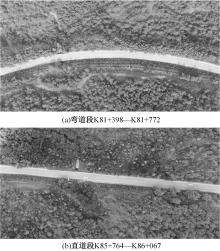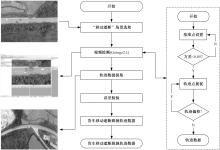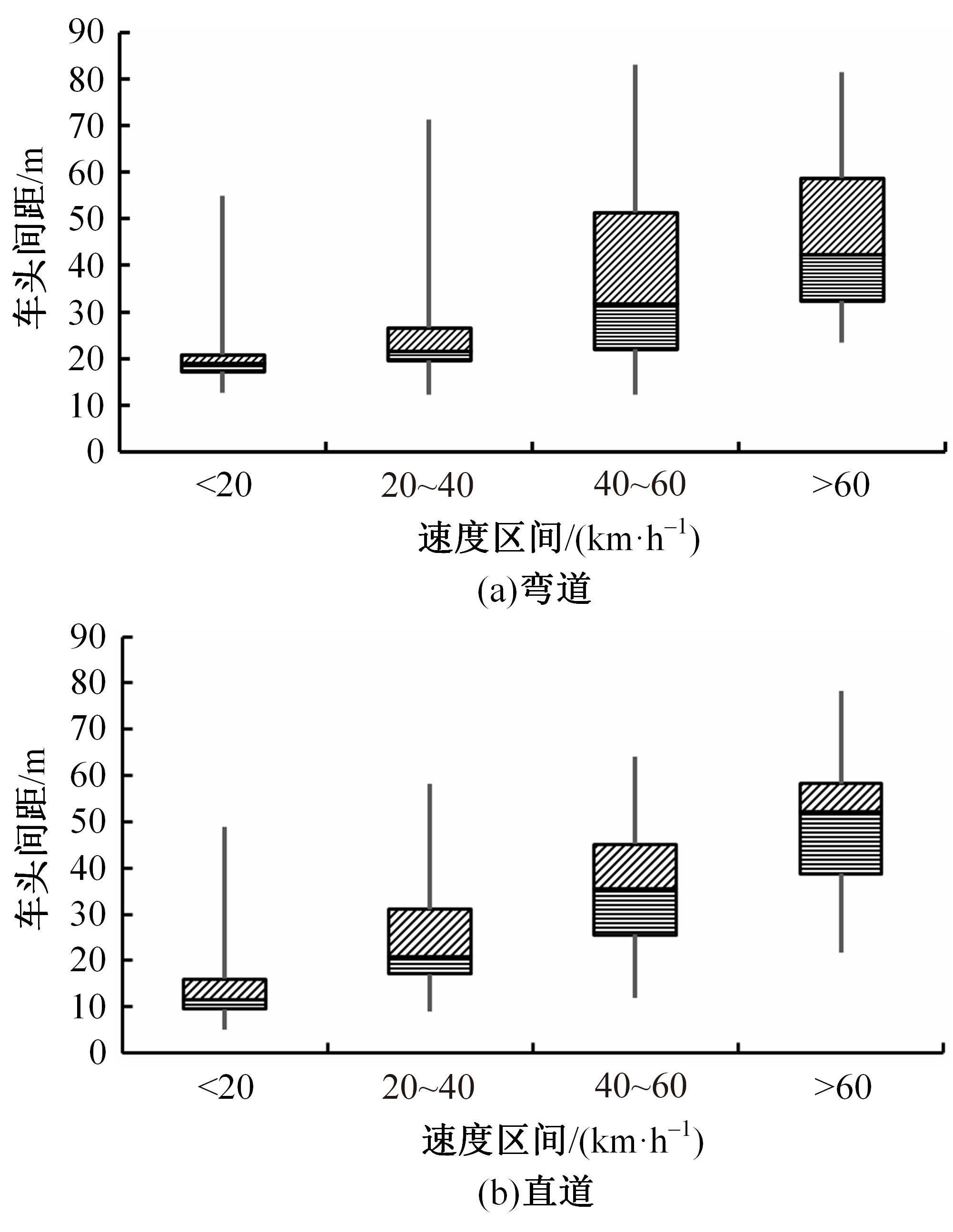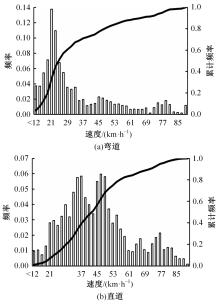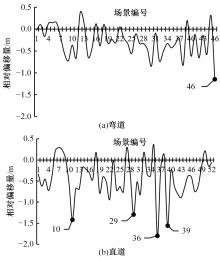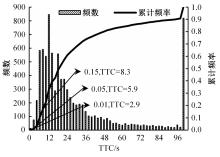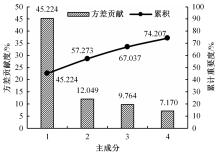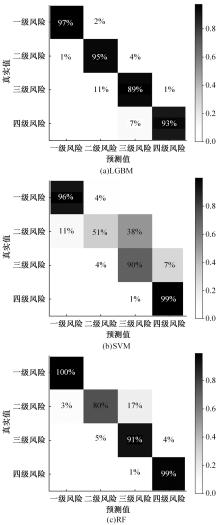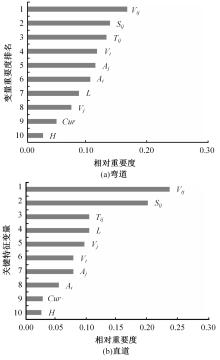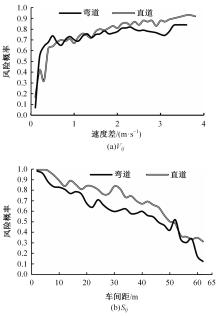Journal of Jilin University(Engineering and Technology Edition) ›› 2024, Vol. 54 ›› Issue (5): 1323-1331.doi: 10.13229/j.cnki.jdxbgxb.20220744
Risk prediction model of passenger car following behavior under truck movement interruption of two-lane highway in mountainous area
Xiao-feng JI1,2( ),Ying-hao XU1,2,Yong-ming PU1,2,Jing-jing HAO1,2,Wen-wen QIN1,2(
),Ying-hao XU1,2,Yong-ming PU1,2,Jing-jing HAO1,2,Wen-wen QIN1,2( )
)
- 1.School of Transportation Engineering, Kunming University of Science and Technology, Kunming 650504, China
2.Yunnan Modern Logistics Engineering Research Center, Kunming 650604, China
CLC Number:
- U491.31
| 1 | 戢晓峰,卢梦媛,覃文文.货车移动遮断影响下的小客车驾驶行为识别[J].交通运输系统工程与信息,2021, 21(5):174-182. |
| Ji Xiao-feng, Lu Meng-yuan, Qin Wen-wen. Identification of passenger car driving behavior under the influence of truck moving interruption[J]. Transportation Systems Engineering and Information Technology, 2021,21(5): 174-182. | |
| 2 | Moridpour S, Mazloumi E, Mesbah M. Impact of heavy vehicles on surrounding traffic characteristics[J]. Journal of Advanced Transportation, 2015, 49(4): 535-552. |
| 3 | Gazis D C, Herman R. The moving and "phantom" bottlenecks[J]. Transportation Science, 1992, 26(3): 223-229. |
| 4 | Aghabayk K, Sarvi M, Young W. Understanding the dynamics of heavy vehicle interactions in car-following[J]. Journal of Transportation Engineering, 2012, 138(12): 1468-1475. |
| 5 | Sarvi M. Heavy commercial vehicles‐following behavior and interactions with different vehicle classes[J]. Journal of Advanced Transportation, 2013, 47(6): 572-580. |
| 6 | Xu C, Liu P, Wang W, et al. Evaluation of the impacts of traffic states on crash risks on freeways[J]. Accident Analysis & Prevention, 2012, 47: 162-171. |
| 7 | Hossain M, Muromachi Y. A Bayesian network based framework for real-time crash prediction on the basic freeway segments of urban expressways[J]. Accident Analysis & Prevention, 2012, 45: 373-381. |
| 8 | 杨奎,余荣杰,王雪松.基于车道集计交通流数据的事故风险评估分析[J].同济大学学报,2016,44(10): 1567-1572. |
| Yang Kui, Yu Rong-jie, Wang Xue-song. Application of aggregated lane data from dual-loop detector to crash risk evaluation[J]. Journal of Tongji University, 2016, 44(10): 1567-1572. | |
| 9 | Song Y, Kou S, Wang C. Modeling crash severity by considering risk indicators of driver and roadway: a Bayesian network approach[J]. Journal of Safety Research, 2021, 76: 64-72. |
| 10 | 李志慧,孙雅倩,陶鹏飞,等.交通事故后的交通运行风险状态等级预测方法[J].吉林大学学报:工学版,2022,52(1):127-135. |
| Li Zhi-hui, Sun Ya-qian, Tao Peng-fei, et al. Forecasting method of traffic operation risk level after traffic accident[J]. Journal of Jilin University (Engineering and Technology Edition), 2022, 52(1): 127-135. | |
| 11 | Sayed T, Zaki M H, Autey J. Automated safety diagnosis of vehicle-bicycle interactions using computer vision analysis[J]. Safety Science, 2013 59(11): 163-172. |
| 12 | 朱顺应,蒋若曦,王红,等.机动车交通冲突技术研究综述[J].中国公路学报,2020,33(2):15-33. |
| Zhu Shun-ying, Jiang Ruo-xi, Wang Hong, et al. Summary of research on vehicle traffic conflict technology[J]. China Journal of Highway and Transport, 2020, 33(2): 15-33. | |
| 13 | 戢晓峰,谢世坤,覃文文,等.基于轨迹数据的山区危险性弯道路段交通事故风险动态预测[J].中国公路学报,2022,35(4):277-285. |
| Ji Xiao-feng, Xie Shi-kun, Qin Wen-wen, et al. Dynamic prediction of traffic accident risk in dangerous mountain bends based on trajectory data[J]. China Journal of Highways, 2022, 35(4): 277-285. |
| [1] | Jie HE,Chang-jian ZHANG,Xin-tong YAN,Chen-wei WANG,Yun-tao YE. Analyzing traffic crash risk of freeway characteristics based on micro⁃kinetic parameters [J]. Journal of Jilin University(Engineering and Technology Edition), 2024, 54(1): 162-172. |
| [2] | SUN Lu, XU Jian, CUI Xiang-min. Panel data models for analysis and prediction of crash count [J]. 吉林大学学报(工学版), 2015, 45(6): 1771-1778. |
| [3] | XU Jian, SUN Lu. Modeling of excess zeros issue in crash count andysis [J]. 吉林大学学报(工学版), 2015, 45(3): 769-775. |
| [4] | JIN Li-sheng, WANG Yan, LIU Jing-hua, WANG Ya-li, ZHENG Yi. Front vehicle detection based on Adaboost algorithm in daytime [J]. 吉林大学学报(工学版), 2014, 44(6): 1604-1608. |
|
||
